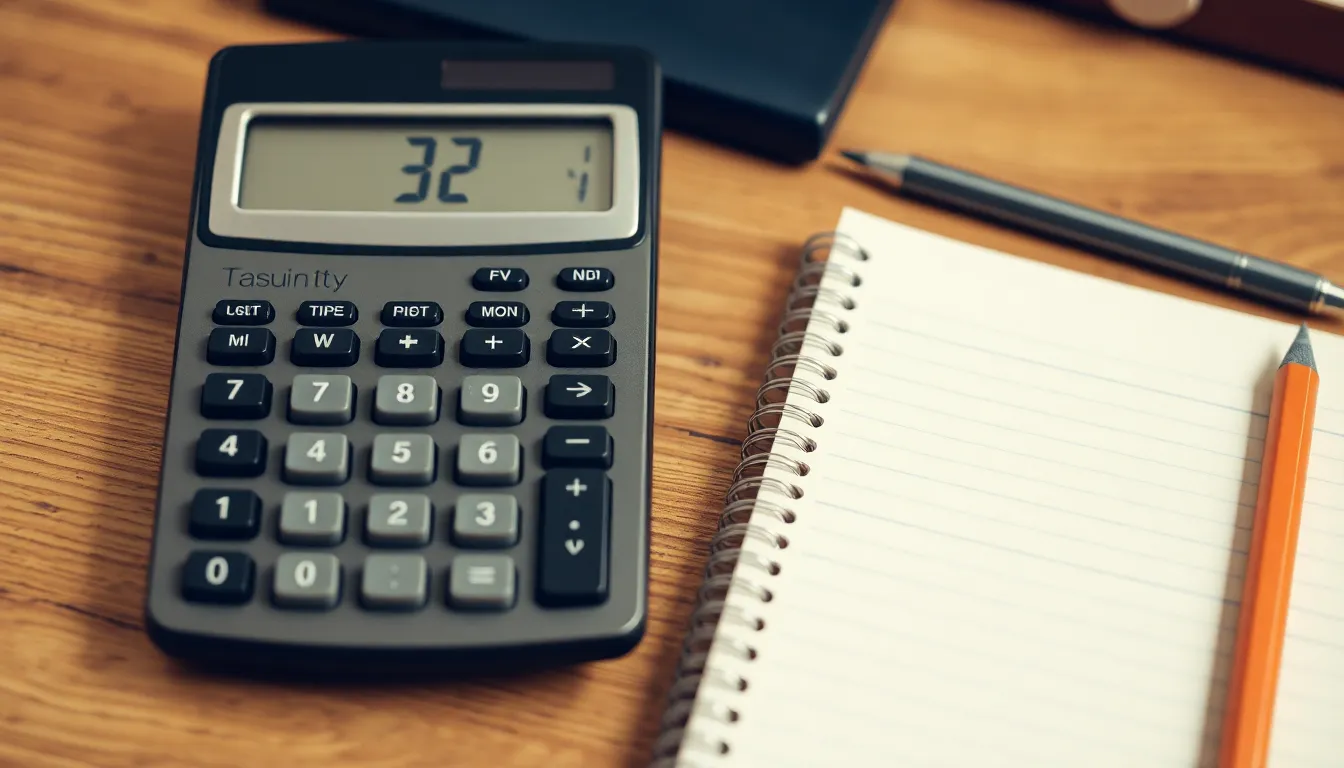Math can sometimes feel like a foreign language, especially when percentages are thrown into the mix. But don’t worry, it’s not as scary as it seems! When faced with the question of what 20% of 160 is, it’s time to roll up those sleeves and dive into some number crunching.
Table of Contents
ToggleUnderstanding Percentages
Percentages are essential numerical values representing a portion of a whole. They simplify comparisons and calculations in various scenarios.
Definition of Percentages
A percentage denotes a fraction out of 100. For example, 20% signifies 20 out of every 100 parts. The symbol “%” directly indicates this relationship. To convert a percentage into a decimal, one divides the percentage by 100. As a result, 20% becomes 0.20 in decimal form. This conversion helps in various mathematical operations, making calculations easier to comprehend.
Importance of Percentages in Daily Life
Percentages feature prominently in everyday situations. They appear in financial contexts such as discounts, interest rates, and taxes. For instance, understanding a 20% discount on a $200 item equates to saving $40, resulting in a final price of $160. In health and fitness, percentages help individuals track body fat and caloric intake. In education, grades are often expressed as percentages, reflecting student performance. Overall, grasping percentages empowers individuals to make informed decisions.
Calculating 20% of 160

Calculating 20% of 160 involves straightforward steps, making it easy to follow.
Step-by-Step Calculation
First, convert 20% into a decimal. Dividing 20 by 100 gives 0.20. Next, multiply 0.20 by 160 to find the value. The calculation looks like this: 0.20 × 160. This multiplication results in 32. Thus, 20% of 160 equals 32.
Alternative Methods for Calculation
Using a calculator can simplify the process. Entering 20% as 0.20 and multiplying it by 160 yields the same result, 32. Another approach involves breaking down the problem. Calculating 10% of 160 first results in 16. Doubling that value leads to 32, demonstrating another method to arrive at the same answer efficiently.
Real-Life Applications
Understanding percentages enhances daily decision-making. Knowing what 20% of a number means allows individuals to navigate financial choices effectively.
Examples of 20% in Real Situations
20% finds application in various scenarios. For instance, a store may offer a 20% discount on a $160 item, reducing the price to $128. In budgeting, allocating 20% of monthly income to savings ensures financial wellness. Health and fitness contexts also utilize this percentage; one might aim to increase their physical activity by 20% each week. These examples illustrate how practical knowledge of percentages simplifies everyday calculations.
Importance of Knowing 20% of 160
Grasping that 20% of 160 equals 32 aids in making informed decisions. It assists in quickly assessing discounts during shopping or understanding financial projections in business settings. Furthermore, calculating 20% fosters a greater understanding of proportional reasoning. Familiarity with basic percentage calculations empowers individuals to manage expenses and investments more effectively. Realizing that 20% represents crucial financial insights ensures better planning and resource allocation.
Common Misconceptions
Misunderstandings about percentages often lead to confusion. Many individuals think of percentages as abstract concepts. A common mistake involves a failure to recognize that percentages always relate to a whole. For example, some people may view 20% as merely a fraction rather than a representation of parts of 100. Clarity arises when remembering that percentages signify proportions of a total. Indeed, viewing percentages through the lens of real-life situations, such as discounts or savings, increases comprehension.
Errors in calculation frequently occur during percentage computations. One prevalent error includes misplacing the decimal point when converting percentages. For instance, miscalculating 20% as 2 rather than 0.20 causes incorrect final results. Additionally, skipping crucial steps, such as failing to multiply after conversion, results in inaccurate answers. To avoid these pitfalls, individuals can double-check their work and break down calculations into simpler parts. Verifying each step can prevent unnecessary mistakes, ultimately leading to correct understanding of how to calculate percentages like 20% of 160 accurately.
Understanding percentages is a valuable skill that extends beyond simple math problems. Knowing that 20% of 160 equals 32 can significantly impact daily decision-making. Whether it’s budgeting for a purchase or planning a fitness routine, this knowledge empowers individuals to make informed choices.
By breaking down calculations and recognizing the relevance of percentages in real-life scenarios, anyone can gain confidence in their math abilities. Embracing these concepts not only simplifies financial planning but also enhances overall understanding of various aspects of life. With practice and awareness, mastering percentages becomes an achievable goal.

